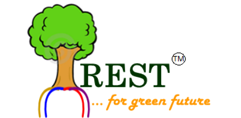Waste management is collection, transportation, and disposal of garbage, sewage and other waste products. Waste management is the process of treating solid wastes and offers variety of solutions for recycling items that don’t belong to trash. It is about how garbage can be used as a valuable resource.
Setting Up a Waste Management System
Establishing the system for managing waste on-site and ensuring adequate site preparation before construction or deconstruction begins will make the process smoother and help reduce damage to salvaged or recycled materials.

A tidy site
Keeping the site tidy is especially important if space is tight. If a building site is well managed and tidy, materials are less likely to get damaged or lost, and workers can be more efficient with materials. This leads to savings in both wastes and costs, and there’s the extra benefit of increasing site safety.
Careful estimating and ordering
Surplus material accounts for 14% of construction wastes so take care to estimate exactly what you need – plan for less than half of the typical waste percentage to avoid overstocking. Negotiate with suppliers to take back unused materials, packaging, or off-cuts.
Just-in-time delivery
Arrange delivery of materials only when they’re needed. This will reduce the time they are stored on site and reduce the chances of wastage resulting from damage, unnecessary handling or theft.
Efficient packaging
Ask suppliers to deliver in sturdy, returnable pallets and have them back-haul empty containers when delivering goods.
Good storage for new material
Determine where new materials will be stored to prevent loss from weather or other damage. Make sure materials are stored away from vehicles and driveways. Put signage up if it helps.
Store new materials separately from waste materials.
Provide secure storage for hazardous materials.
Clear communication and training
Include waste reduction instructions or standards in your contracts, in your induction material, and in other communications with staff and subcontractors. Make it a regular item on informal work meetings around the toolbox and project management meetings.
Train staff and subcontractors during induction and team meetings to use the waste management system and consider incentives to keep them interested throughout the project.
Provide detailed drawings and instructions to staff to minimize mistakes, rework, and temporary works.
Develop an information sheet to explain the waste management system, or create a waste section in your regular induction information.
Use clear signage around the site to explain the waste management system. Some examples are:
- using the hazard identification board
- staff notice board
- signage on bins and at the waste storage area
- signs on site entrances
Designated centralized cutting areas
Have designated cutting or preparation areas for timber, joinery, cladding, tiling, etc., and store the off-cuts in a single location for easy access and reuse.
Dedicated waste storage area
Have a single waste storage area (away from storage of new materials) with clear signage on how to sort and store recyclables.
